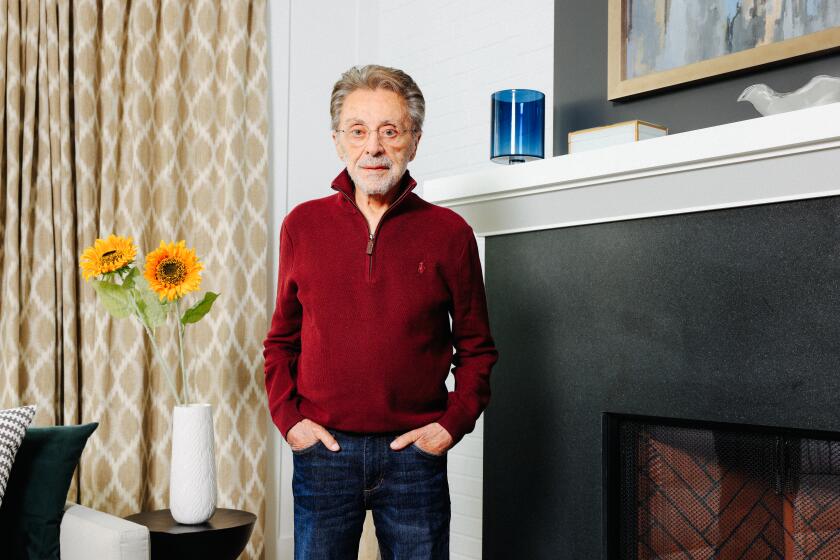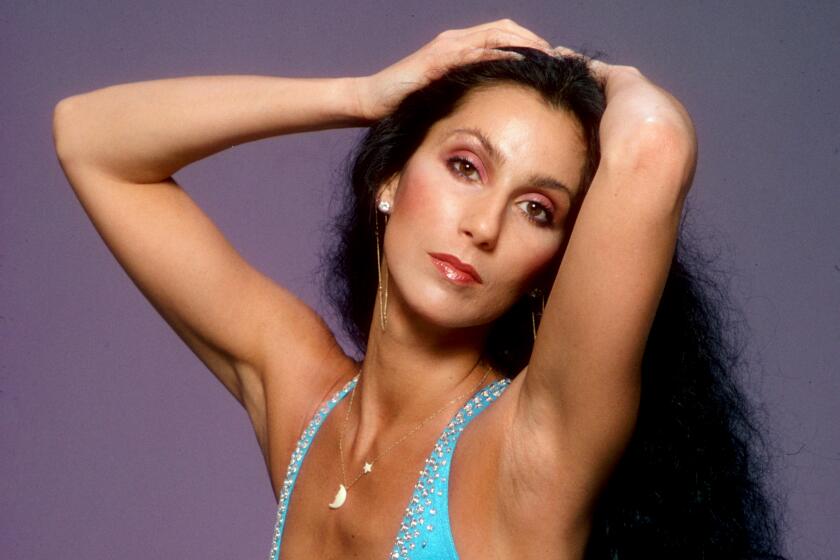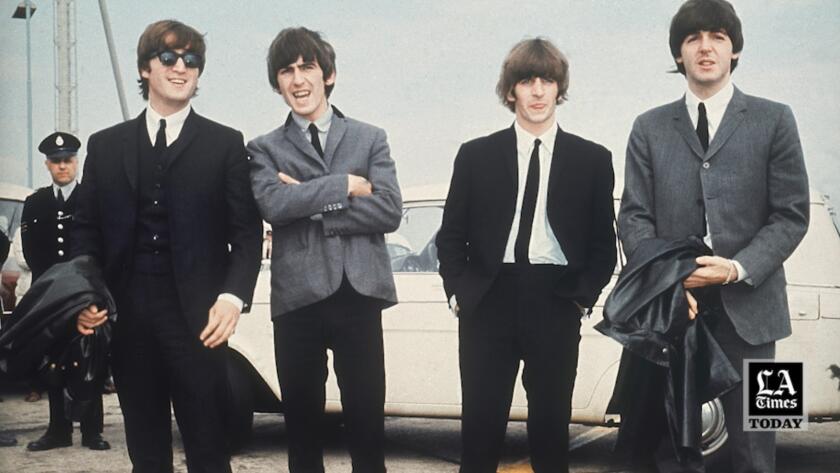The untold story behind the last Beatles song
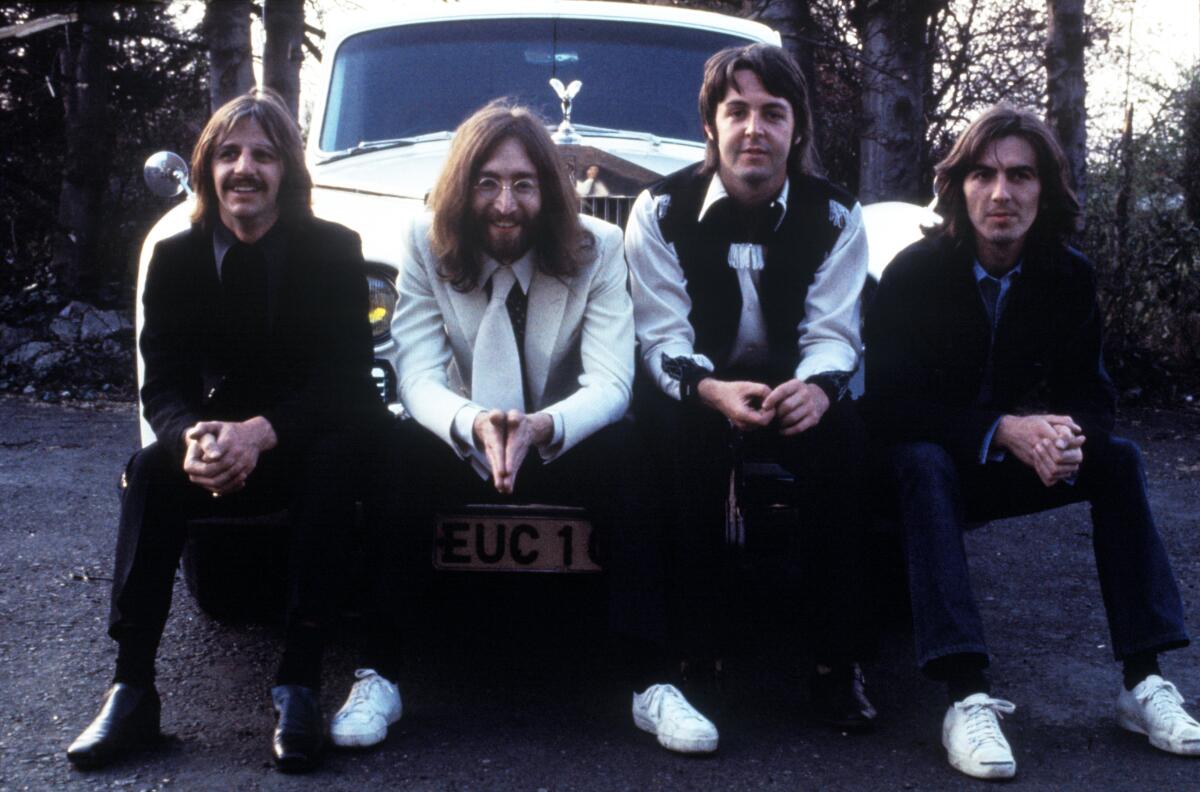
- Share via
Paul McCartney may be the only person on Earth who believes the Beatles have any unfinished business in 2023.
For years, McCartney fixated upon “Now and Then,” a song John Lennon sketched in the late 1970s that the surviving Beatles attempted to complete in the mid-1990s when they were searching for new material to supplement their long-gestating documentary, “Anthology.”
Thanks to machine learning techniques developed by a technical team led by Peter Jackson, the director who helmed 2021’s multipart Beatles documentary “Get Back,” McCartney and Ringo Starr, the other surviving band member, received the opportunity to finish “Now and Then” in the past year. Now touted as “the last Beatles song” — a phrase that’s an omnipresent slogan in all its marketing — “Now and Then” makes its debut this Friday, roughly 26 years after it was slated to appear on “Anthology 3,” the concluding volume in the Beatles’ multimedia archival project. Accompanied by a brief, heartfelt making-of mini-film and music video, “Now and Then” will also appear on a deluxe expanded reissue of “1962-1966” and “1967-1970,” the career-spanning compilations commonly called the “Red Album” and “Blue Album,” respectively.
Chances are, “Now and Then” will get a fuller hearing now than it would’ve back then, as the third and final reunion track from “the Threetles,” the name the British press bestowed upon McCartney, Starr and George Harrison. Then, it would’ve been old news. Now, it’s intended as an event, a farewell to the most beloved group of the rock ’n’ roll era.

Positioning “Now and Then” as an event runs the risk of putting too great a burden on a wispy, melancholy ballad Lennon wrote during his time in seclusion at the Dakota apartment building and then promptly forgot, letting it languish among the hundreds of hours of demos he recorded during the late 1970s. Many of these tracks were aired on the long-running Westwood One radio program “The Lost Lennon Tapes,” but “Now and Then” remained unheard, possibly because there was a sense it was unfinished: It bore two alternate titles and its lyrics occasionally drifted into the slipstream.
Nevertheless, the melody of “Now and Then” has an underlying poignancy, which might be the reason it was among the four unfinished Lennon songs his widow Yoko Ono gave to the surviving Beatles when they were seeking additional material for “Anthology.” After rejecting “Grow Old With Me,” which had appeared on Lennon’s posthumous “Milk and Honey,” the Beatles chose to pursue “Free as a Bird” and “Now and Then,” partially because they contained the genesis of a song that McCartney and Harrison could shape into a finished tune.
As Frankie Valli prepares a don’t-call-it-a-farewell tour, the music of the legendary Four Seasons singer continues to find new audiences.
Working with Jeff Lynne, the Electric Light Orchestra leader who performed with Harrison in the Traveling Wilburys and produced his 1987 comeback “Cloud Nine,” the Beatles managed to finish “Free as a Bird,” fleshing out Lennon’s song with a bridge and slathering it with harmonies designed to conjure collective memories. Everything broke down when they attempted to replicate the process for “Now and Then.” Lynne remembered, “It was one day — one afternoon, really — messing with it” before Harrison pulled the plug on the session, grousing that the song wasn’t worthwhile. McCartney told Q magazine in 1997, “It didn’t have a very good title, it needed a bit of reworking, but it had a beautiful verse and it had John singing it. George didn’t like it. The Beatles being a democracy, we didn’t do it.”
(In a statement accompanying the announcement of “Now and Then,” Harrison’s widow Olivia said, “Back in 1995, after several days in the studio working on the track, George felt the technical issues with the demo were insurmountable and concluded that it was not possible to finish the track to a high enough standard. If he were here today, [son] Dhani and I know he would have wholeheartedly joined Paul and Ringo in completing the recording of ‘Now and Then.’”)

The dynamics in the democracy shifted after Harrison’s death in 2001. With George gone, the Beatles no longer had a skeptic in their ranks, so if McCartney wanted to finish the song, he could. And one thing was certain, Paul wanted to finish “Now and Then.” He’d been mentioning the song since promoting his post-”Anthology” solo album “Flaming Pie” in 1997, continuing to bring it up in interviews over the decades. He can be seen in the 2012 documentary “Mr. Blue Sky: The Story of Jeff Lynne & ELO,” claiming he’ll “nick” the abandoned Beatles track, and “finish it, one of these days.”
That day finally arrived in 2022, thanks to Jackson, whose team developed a way to isolate specific audio tracks in a muddled recording. This technique that provided great insights in his “Get Back” — a hushed private conversation between Lennon and McCartney reveals their working dynamics and friendship in a way no public statement could — but it can also be used to pick out particular elements of a demo, such as Lennon’s voice on the murky “Now and Then” demo. That proved to be a major hurdle in the 1990s. Even on “Free as a Bird” and “Real Love,” Lennon’s voice is woven to the piano, floating in and out of the mix tied to the melody line.
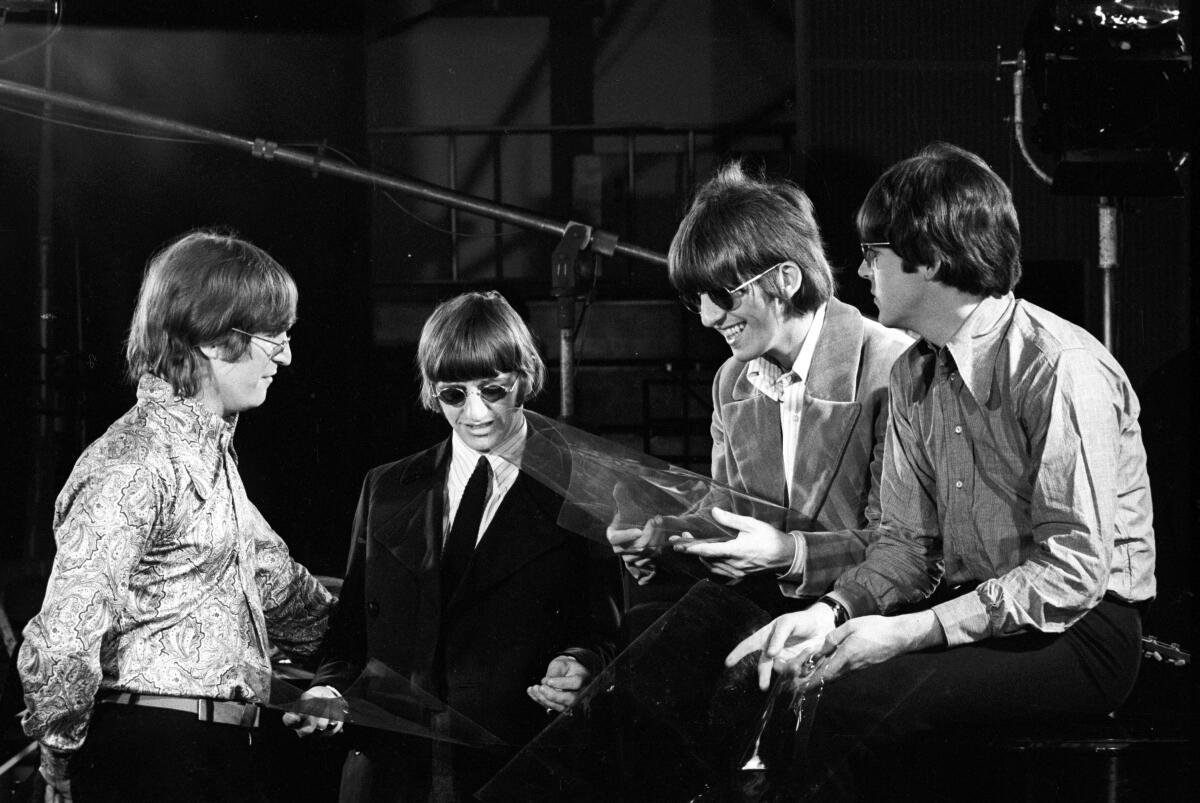
What enticed McCartney about “Now and Then” is how it seemed incomplete; it cried out for his contributions. He said that “Free as a Bird” functioned in a similar fashion: “It was really like working on a record with John, as Lennon/McCartney/Harrison, because we all chipped in a bit on this one, George and I were vying for best lyric. That was more satisfying than just taking a John song, which was what we did for the second, ‘Real Love.’ It worked out great but it wasn’t as much fun.”
“Real Love” was so complete that it appeared on the soundtrack to the 1988 documentary “Imagine: John Lennon,” nearly eight years prior to the Beatles’ version. “Now and Then” did creep into public view as part of the long-forgotten 2005 production “Lennon: The Musical,” but it remained sparse and somewhat undercooked, particularly when compared to the pair of ornate productions the Beatles made with Lynne.
McCartney has spent nearly 30 years with “Now and Then” lingering in the back of his mind — amazingly, the time separating its release and “Real Love” is longer than the distance between “Free as a Bird” and “The Long and Winding Road,” the final single the Beatles released in their lifespan — so it should come as no surprise that the finished product hardly sounds haphazard. It’s deliberate and sumptuous, studio wizardry savvily disguising the distance between Lennon’s original tape and McCartney’s new vocal.
Most of this sleight of hand comes from McCartney, who is credited for production alongside Giles Martin — the son of original Beatles producer George Martin who has become the caretaker of their recorded legacy — and plays every instrument outside of Ringo’s drums and the trace elements of Lennon’s piano and Harrison’s rhythm guitar parts from the 1990s. The studio can be deceiving: The soaring slide guitar solo seems unmistakably like George but Paul designed it as a tribute to his late bandmate.
At 77, Cher just released her first Christmas album. Does that portend a tour? ‘I hope so. I want to... But it’s daunting.’
Back in 1994, McCartney bristled at Harrison playing slide guitar on “Free as a Bird” — “I thought, oh, it’s ‘My Sweet Lord’ again” — so there’s some measure of irony that Paul replicates every one of George’s slide signatures on the “Now and Then” solo. Yet it also feels loving, a way of communing with the departed.
That feeling applies to “Now and Then” as a whole. Where the “Anthology” reunion tracks carry a sense of bright nostalgia, there’s a wistful undercurrent flowing through the recording, an appreciation of what was given as much as a mourning for what was lost. Almost all of these emotions are conjured through the recording itself. Unlike “Free as a Bird,” which was given a bridge that was a bit on the nose, McCartney pares away Lennon’s words; a second verse with a “lose you or abuse you” rhyme has been excised, as has a wandering bridge.
One place where there’s an additional word is when McCartney sings “then we will know for sure I will love you” at the close of a verse, an addition that buttresses a melody that dissipated during this moment on the original Lennon demo. That is also the only moment where McCartney’s voice can be distinctly recognized. Throughout “Now and Then,” the voices of the other Beatles are more felt than heard, with McCartney teasing out the song’s inherent emotion with his arrangements, letting his bass, Ringo’s rhythms and George’s chugging strums, not their vocal harmonies, carry the weight.
Robbed of the opportunity to participate in a true final collaboration with his greatest muse, McCartney instead elevates this suggestion of a song into a realized record, one where its elegant, softly psychedelic flow lets Lennon’s longing linger in the subconscious. That regret is articulated clearly in a chorus of “Now and then, I miss you / Now and then, I want you to be there for me / Always to return to me,” words that sharpen John’s original intention with its second newly written clause. It’s a passage where Lennon’s yearning for McCartney intertwines with Paul’s mourning for John, a shared grieving for the partnership that defined both their lives. In that sense, “Now and Then” does provide something of a fitting conclusion to the Beatles’ recorded career — not so much a summation but as a coda that conveys a sense of what the band both achieved and lost.
- Share via
Watch L.A. Times Today at 7 p.m. on Spectrum News 1 on Channel 1 or live stream on the Spectrum News App. Palos Verdes Peninsula and Orange County viewers can watch on Cox Systems on channel 99.
More to Read
The biggest entertainment stories
Get our big stories about Hollywood, film, television, music, arts, culture and more right in your inbox as soon as they publish.
You may occasionally receive promotional content from the Los Angeles Times.
